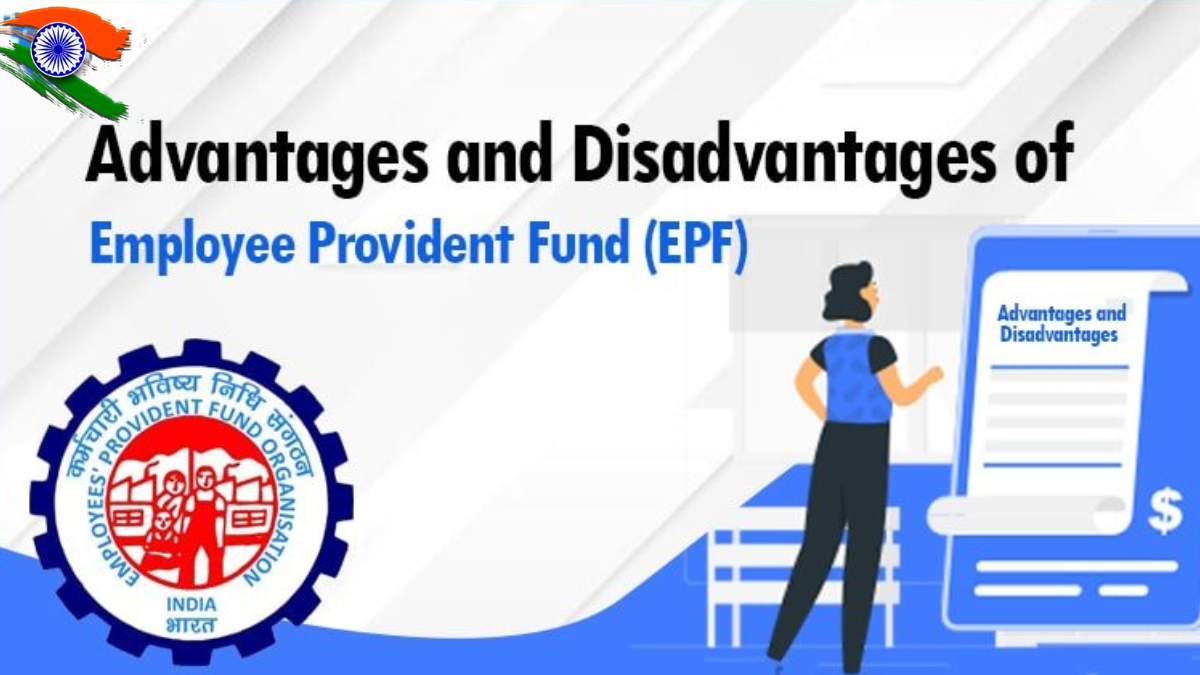Your monthly provident fund deduction might not be going where you think it is. While most employees assume their PF contributions flow directly to the Employees’ Provident Fund Organisation (EPFO), some companies handle these funds internally through their own trusts. This arrangement, known as an exempted establishment, affects over 1,500 companies across India and millions of employees.

Understanding how exempted establishments work is crucial for your financial security. These arrangements can offer faster service and potentially higher returns, but they also carry unique risks that every employee should evaluate. Let’s explore what exempted establishments mean for your retirement savings and how to protect your interests.
What Are EPF Exempted Establishments?
An exempted establishment is a company that has received special permission from the Central Provident Fund Commissioner to manage employee PF funds through its own trust rather than depositing them with EPFO. This exemption isn’t granted lightly—companies must meet strict criteria and demonstrate their ability to match or exceed EPFO’s performance.
The exemption process requires companies to prove they can provide the same level of service, transparency, and returns as EPFO. They must establish a robust trust structure, maintain proper records, and ensure timely processing of employee benefits. Only companies with strong financial standing and proven track records typically receive this permission.
Currently, more than 1,500 companies in India operate as exempted establishments. These include major public sector enterprises like ONGC (Oil and Natural Gas Corporation), BHEL (Bharat Heavy Electricals Limited), and SBI (State Bank of India), along with several large private corporations.
How Exempted Establishments Operate
Companies with exempted status manage PF funds through dedicated trusts governed by their own boards. These trusts invest employee contributions in approved securities, similar to how EPFO manages its funds, but with potentially different investment strategies and timelines.
The fundamental requirement is that exempted establishments must provide interest rates equal to or higher than EPFO’s declared rate. EPFO currently offers 8.25% annual interest on PF balances. If an exempted trust earns less than this rate in any given year, the company must cover the shortfall from its own resources.
This system creates both opportunity and obligation for employers. Companies can potentially offer superior returns through more active fund management, but they also bear the financial risk if their investments underperform EPFO’s benchmark.
Benefits of Exempted Establishments

Faster Processing Times
One of the most tangible benefits employees experience with exempted establishments is quicker processing of PF-related services. Loan applications, partial withdrawals, and final settlements often take significantly less time compared to EPFO’s centralized system.
Where EPFO might take several weeks to process a PF loan, exempted establishments can often complete the same transaction within days. This efficiency stems from having dedicated staff handling a smaller pool of employees rather than EPFO’s massive nationwide database.
Enhanced Customer Service
Exempted establishments typically provide more personalized customer service. Employees can often speak directly with trust administrators, get real-time updates on their applications, and receive clearer explanations of their benefits.
Many exempted trusts also offer additional communication channels, including dedicated helplines, online portals with enhanced features, and regular newsletters updating employees about their PF status and policy changes.
Potential for Higher Returns
Some exempted establishments have historically provided interest rates higher than EPFO’s declared rates. When market conditions are favorable and the trust’s investment strategy performs well, employees can benefit from these additional returns.
However, this advantage isn’t guaranteed and depends heavily on market performance and the trust’s investment expertise. The key word here is “potential” there’s no assurance that exempted establishments will consistently outperform EPFO.
Risks and Drawbacks
Reduced Regulatory Oversight
While EPFO operates under strict government oversight with multiple layers of accountability, exempted establishments have more operational autonomy. Although they’re subject to annual audits and regulatory compliance, the day-to-day oversight may be less stringent than EPFO’s centralized monitoring.
This reduced oversight could potentially expose employees to risks if the trust management makes poor investment decisions or fails to maintain proper governance standards.
Company-Dependent Security
Your PF security with an exempted establishment is inherently tied to your employer’s financial health and integrity. If the company faces severe financial difficulties or closure, there could be complications in accessing your PF funds, even though the trust is technically separate from the company’s operations.
Unlike EPFO, which has government backing and operates independently of any single employer, exempted establishments depend on their parent companies for administrative support and, in some cases, financial backing when returns fall short.
Limited Portability
Transferring PF balances between exempted establishments and EPFO, or between different exempted establishments, can be more complex than standard EPFO-to-EPFO transfers. This could create complications if you change jobs frequently or move between different types of employers.
The transfer process may involve additional documentation, longer processing times, and potential delays in fund availability during job transitions.
Regulatory Safeguards
EPFO maintains several oversight mechanisms to protect employees in exempted establishments. Annual audits are mandatory, and trusts must submit detailed financial reports and compliance certificates regularly.
If an exempted establishment fails to meet regulatory requirements or provide adequate returns, EPFO can revoke the exemption. When this happens, the trust must transfer all employee funds to EPFO, ensuring continuity of benefits.
The Central Provident Fund Commissioner also has the authority to intervene if employee complaints or audit findings reveal significant issues with an exempted establishment’s operations.
What Employees Should Monitor
Regular Account Verification
Check your PF passbook or online account statement regularly to verify that contributions are being credited correctly and on time. Look for any discrepancies in contribution amounts or missing monthly credits.
Interest Rate Tracking
Monitor the interest rates declared by your exempted establishment compared to EPFO’s rates. Your employer should communicate the annual interest rate clearly, and it should never be lower than EPFO’s declared rate for the same period.
Annual Statements and Reports
Request and review annual statements from your PF trust. These documents should provide clear information about your balance, interest earned, and the trust’s overall financial health.
Making an Informed Decision
If you’re considering employment with a company that operates an exempted establishment, or if your current employer is transitioning to this model, evaluate both the opportunities and risks carefully.
Research the company’s financial stability, the trust’s historical performance, and the quality of customer service provided to employees. Consider your own risk tolerance and whether the potential benefits outweigh the additional complexities.
For most employees, the decision isn’t entirely in their hands what if your employer operates an exempted establishment, you’re automatically enrolled. However, understanding the system helps you monitor your benefits more effectively and make informed career decisions.
Protecting Your Interests
Stay informed about your rights and benefits under the exempted establishment system. Maintain copies of all PF-related documents, including contribution statements, loan agreements, and correspondence with the trust.
If you notice any irregularities or have concerns about your PF management, don’t hesitate to contact the trust administrators directly. You also have the right to escalate issues to EPFO if you’re not satisfied with the trust’s response.
Consider diversifying your retirement planning beyond just PF contributions. While PF remains an important component of retirement savings, having additional investment vehicles can provide extra security and growth potential.
Taking Control of Your PF Future
Exempted establishments represent both an opportunity and a responsibility for employees. They can offer superior service and potentially better returns, but they require more active monitoring and awareness from employees.
The key to success with exempted establishments lies in staying informed and engaged with your PF management. Regular monitoring, understanding your rights, and maintaining clear communication with trust administrators will help ensure your retirement savings remain secure and growing.
Whether your PF is managed by EPFO or an exempted establishment, remember that this is your money and your future. Take the time to understand how it’s being managed, and don’t hesitate to ask questions or raise concerns when necessary.
FAQs About EPF Alert 2025
1. What is the difference between an EPFO-managed fund and an exempted establishment?
An EPFO-managed fund is directly handled by the Employees’ Provident Fund Organization, whereas an exempted establishment manages its own provident fund through a private trust, adhering to EPFO guidelines.
2. How can I check if my employer is an exempted establishment?
You can verify this by checking your salary slip for details about PF contributions or contacting your HR department. Additionally, the EPFO website provides tools to identify exempted establishments.
3. Are there any risks associated with exempted establishments?
While exempted establishments are monitored by the EPFO, risks may arise if the private trust is not managed efficiently or lacks compliance. Employees should review annual statements and raise concerns if discrepancies are noticed.
4. Can I transfer my EPF balance from an exempted establishment to an EPFO account?
Yes, you can transfer your EPF balance during job changes. The process involves raising a transfer request via the EPFO Member Portal.
5. What happens to my EPF if my organization stops functioning as an exempted establishment?
If an exempted establishment ceases operations or if their exemption is revoked, the EPFO will take over the management of the provident fund to ensure the safety of employees’ contributions.
6. Is my money safer in an EPFO-managed fund?
Both EPFO-managed funds and exempted establishment funds are regulated by strict guidelines. However, EPFO-managed funds are directly overseen by the government, often providing employees with added assurance.
7. How can I ensure my PF contributions are being deposited?
You can track your PF contributions through your monthly salary slips or by logging into the EPFO Member Portal to view your account statement.
For More Information Click HERE